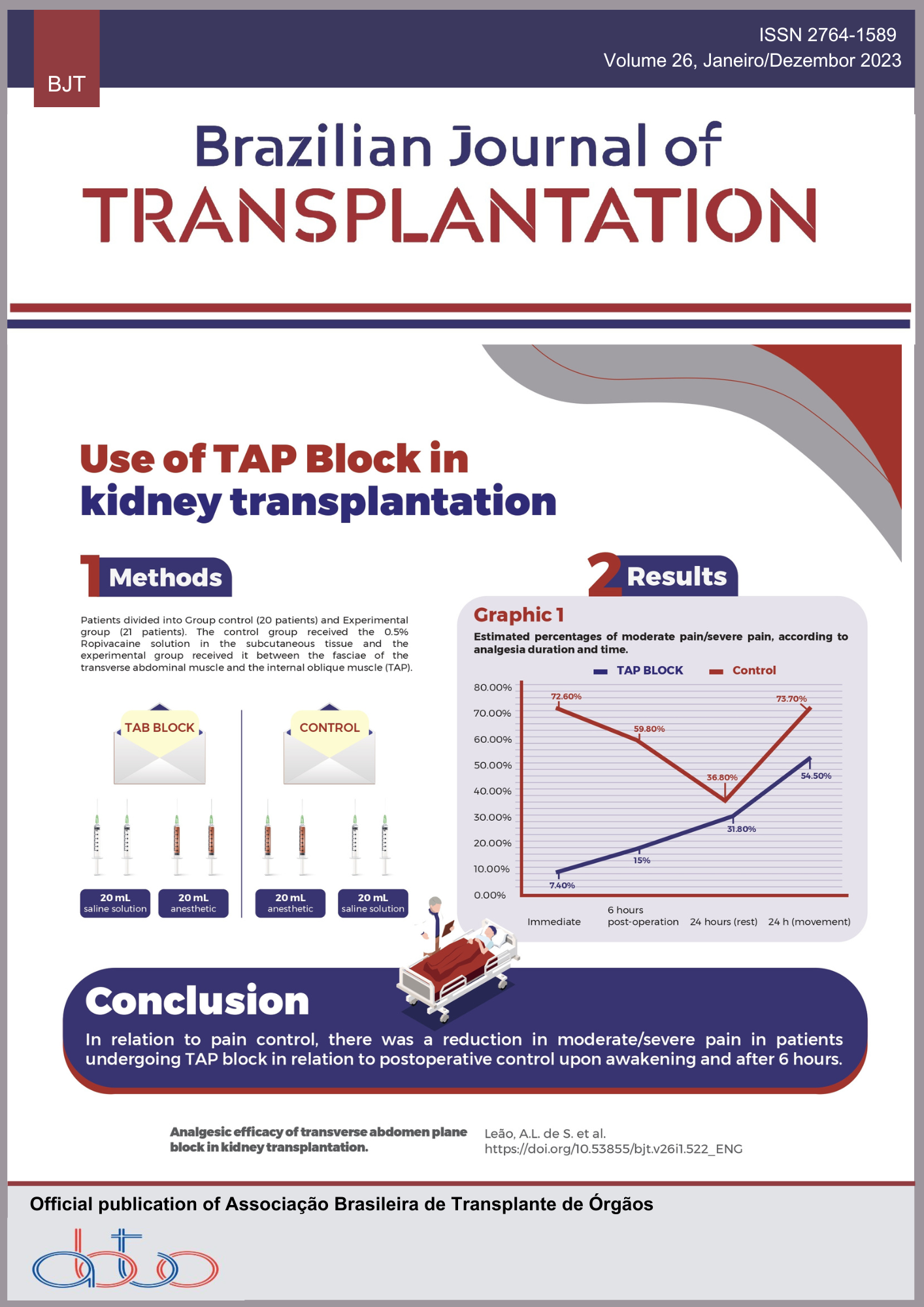Transoperative Hemodynamic Status and Delayed Graft Function: Analysis of 42 Consecutive Renal Transplantation
Keywords:
Kidney Transplantation, Delayed Graft Function, Risk Factors, HemodynamicsAbstract
Objective: Evaluate the correlation between transoperative hemodynamic status and development of delayed graft function (DGF) in patients undergoing kidney transplantation. Methods: We analyzed 42 consecutive renal transplants between May 2021 and May 2022 in a University Hospital. Four kinds of variables were assessed. Recipients variables: age, gender, race, type of dialysis, dialysis time before transplantation and residual diuresis. Donor variables: age, serum creatinine level, death cause, race, laterality of the kidney (right or left kidney), perfusion solution and Kidney Donor Profile Index (KDPI). Surgical variables: cold Ischemia time (CIT), vascular multiplicity, the surgeon, duration of surgery and blood pressure during the procedure. Immunological variables: Panel reactive antibodies (PRA), HLA mismatches and the need of induction therapy with antithymocyte globulin. Results: In univariate analysis, regarding recipients’ factors, type of dialysis (hemodyalisis) (p=0.004) and absence of residual diuresis (p=0.011) were significant on the development of DGF. Among the donors, only the laterality of the kidney (rightkidney) was statiscally significant (p=0.005). The cold ischemia time higher than 24 hours (p=0.022), systolic blood pressure (SBP) less than 130 mmHg at reperfusion (p<0.001), Mean Arterial Pressure (MAP) less than 80 mmHg at the reperfusion (p<0.001), and mean MAP post-reperfusion (p=0.049) were the significant surgical factors for DGF. Among immunological factors, the patients that received antithymocyte globulin as induction therapy more frequentlydeveloped DGF (p=0.036). Only MAP < 80 mmHg (p=0.004) and SBP < 130m mmHg (p=0.005) were independent risk factors for DGF. Conclusion: In this survey, optimal renal perfusion, avoiding fall in blood pressure in the transoperative period, especially after graft reperfusion, is crucial for the immediate functioning of the kidney.
Downloads
Downloads
Published
How to Cite
Issue
Section
License
Copyright (c) 2023 Bruno de Figueiredo Pimpao, Silvia Regina Hokazono, Tiago Ormelez Ruani, Vital Burko Santos, Fernando Meyer, Rogerio de Fraga

This work is licensed under a Creative Commons Attribution 4.0 International License.









